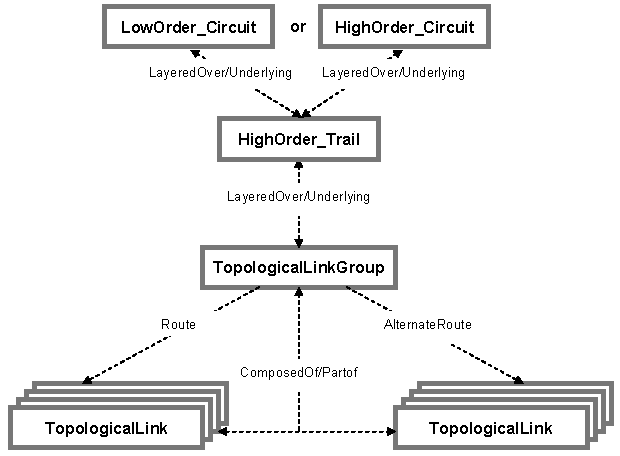2-fiber Bidirectional Line Switched Ring (BLSR) or Multiplexed Section-Shared Protection Ring (MS-SPRing) protection is a line protection scheme used in SONET/SDH rings. In this scheme, half of the bandwidth of the fiber is used to carry traffic. The other half is used for protection. For example, if the ring is an OC-48/STM-16 ring, tributaries 1-24/1-8 are used for working; while 25-48/9-16 are used for protection. The scheme activates ring switching when there is a line-level failure away from the failure.
Nodes are connected via bidirectional lines to form a ring. Up to 16 Network elements can be connected in a 2F-BLSR/2F-MS-SPRing ring. When a line failure occurs, the nodes that terminate the failed line switch the traffic from the working path to the protection path. The protection path traverses around the ring opposite to the failure.
Physical configuration of the 2F-BLSR/2F-MS-SPRing protection group shows the physical configuration of the 2F-BLSR/2F-MS-SPRing Protection Group.

Classes and relationships used in 2F-BLSR/2F-MS-SPRing protection shows the classes and relationships used to model 2F-BLSR/2F-MS-SPRing protection. Each HighOrder_Trail across a 2F-BLSR/2F-MS-SPRing ring has a LayeredOver relationship with the protection group, TopologicalLinkGroup.
The TopologicalLinkGroup object has Route and AlternateRoute relationships that each point to a set of TopologicalLink objects, which are used in the working route and alternate route, respectively.
In Classes and relationships used in 2F-BLSR/2F-MS-SPRing protection, the ring has two legs; one is used for the working route, while the other is used for the alternate route. The HighOrder_Circuit or LowOrder_Circuit object and HighOrder_Trail object each have a LayeredOver relationship with the TopologicalLinkGroup object. These relationships are used to assess the impact of network failures on the HighOrder_Circuit or LowOrder_Circuit object and HighOrder_Trail objects that use the ring.
